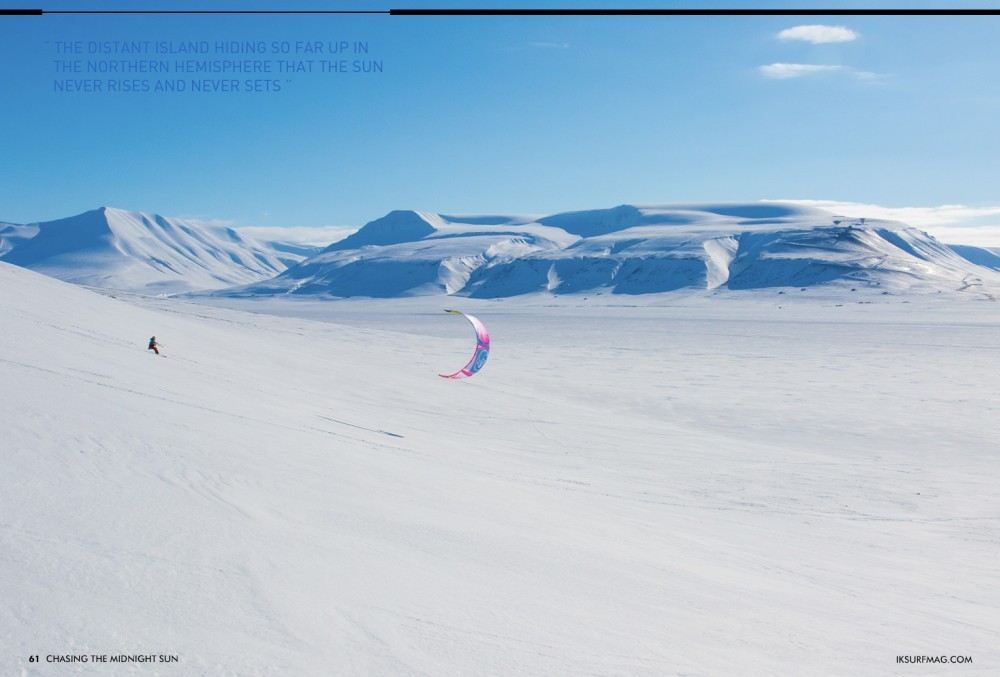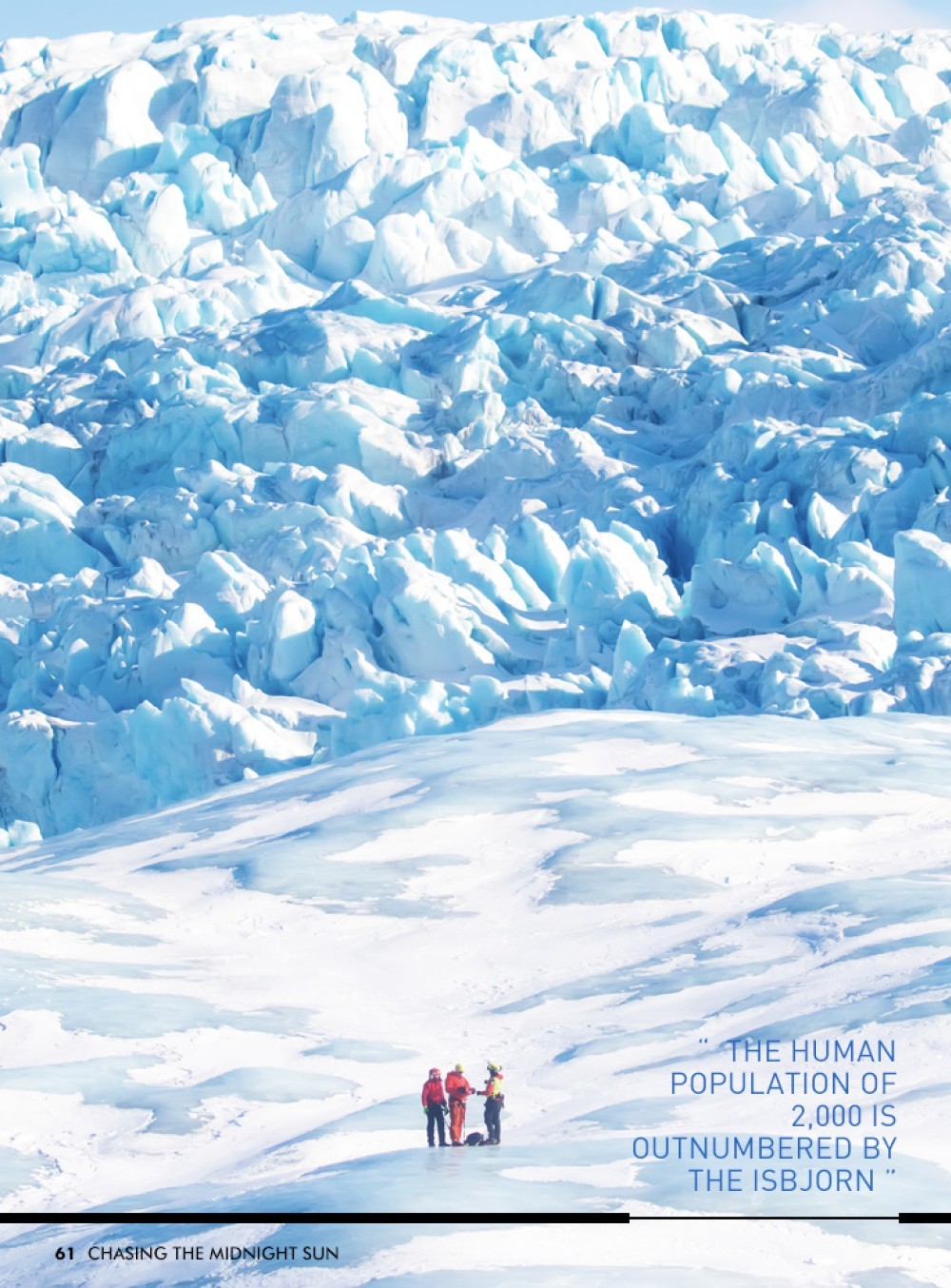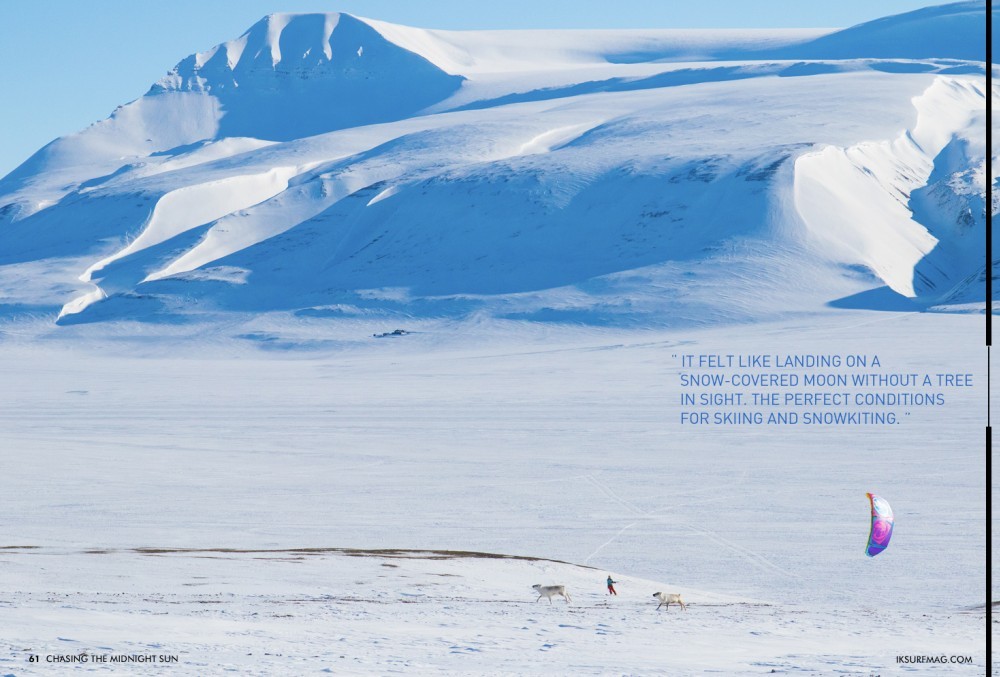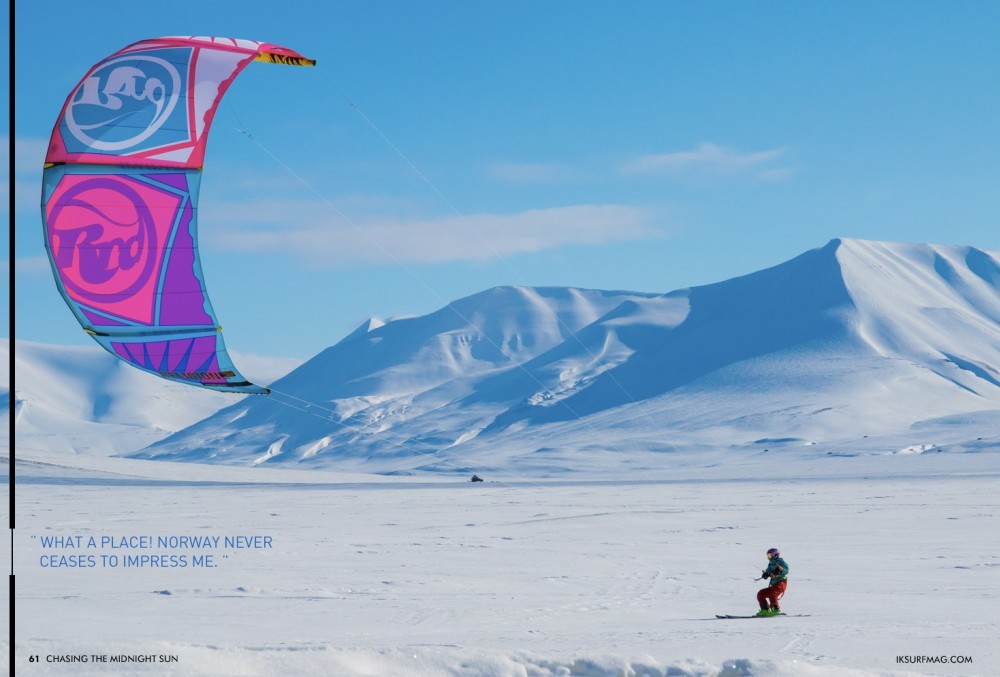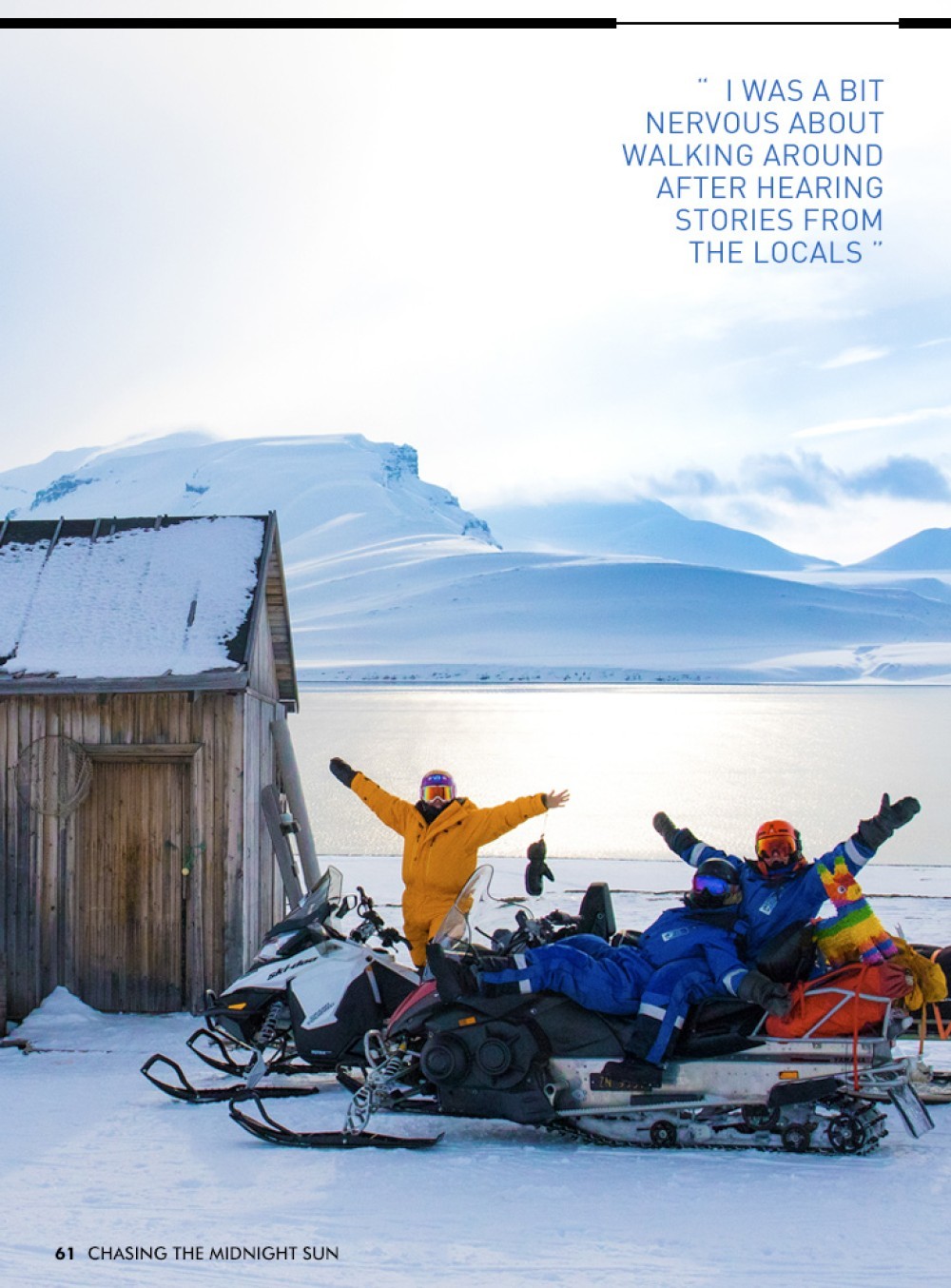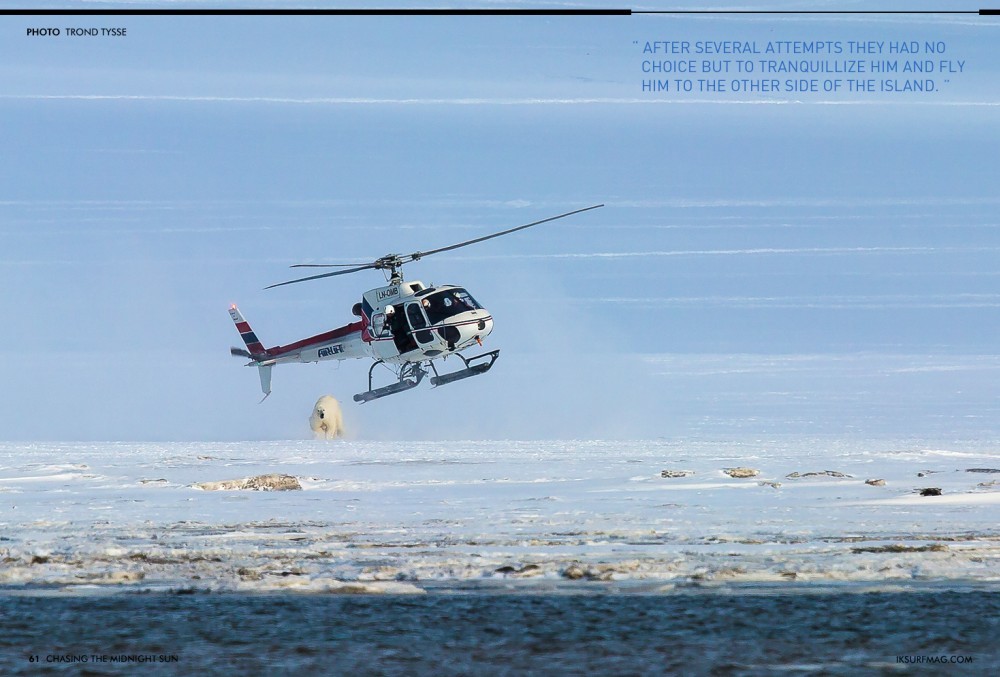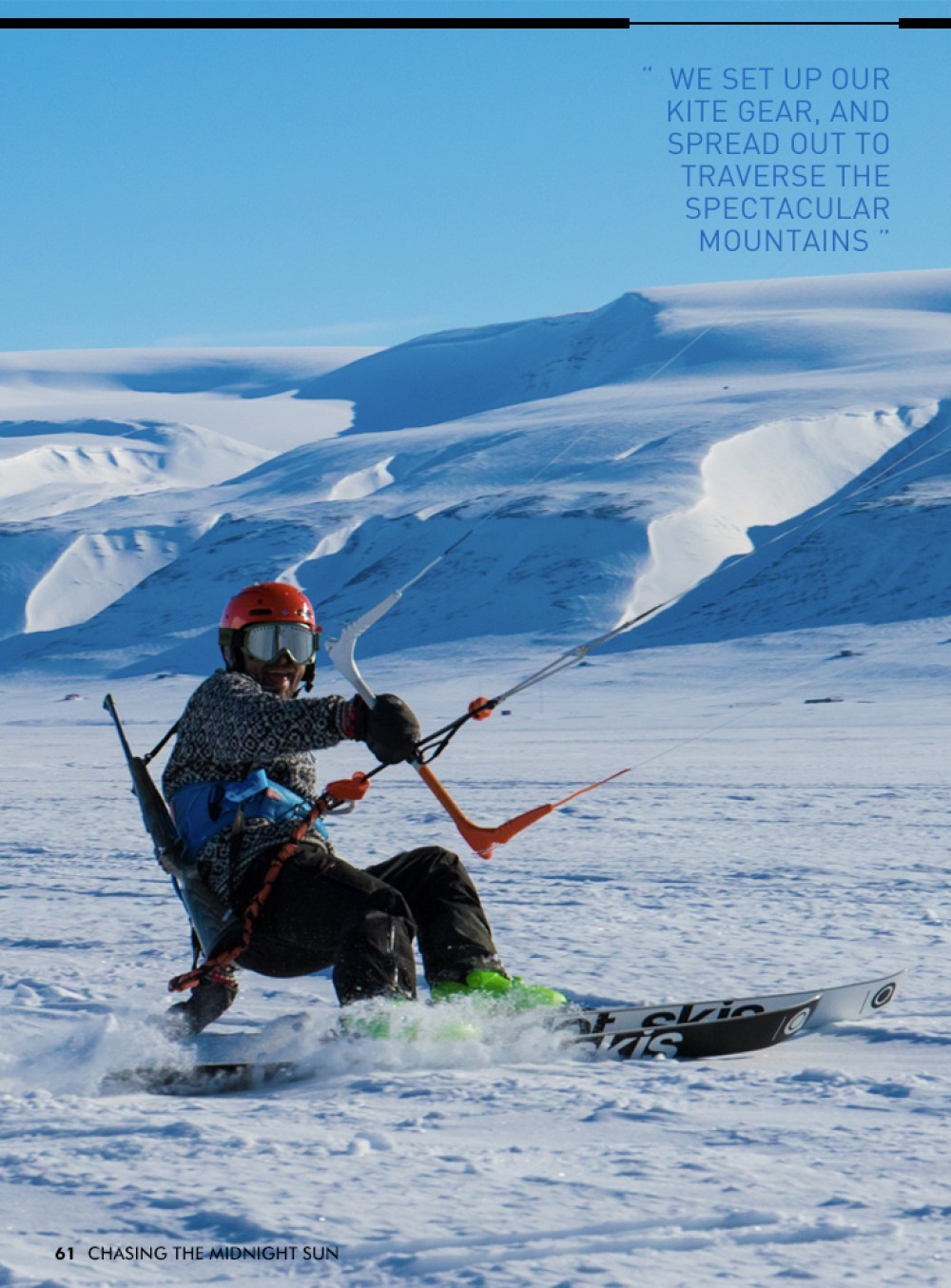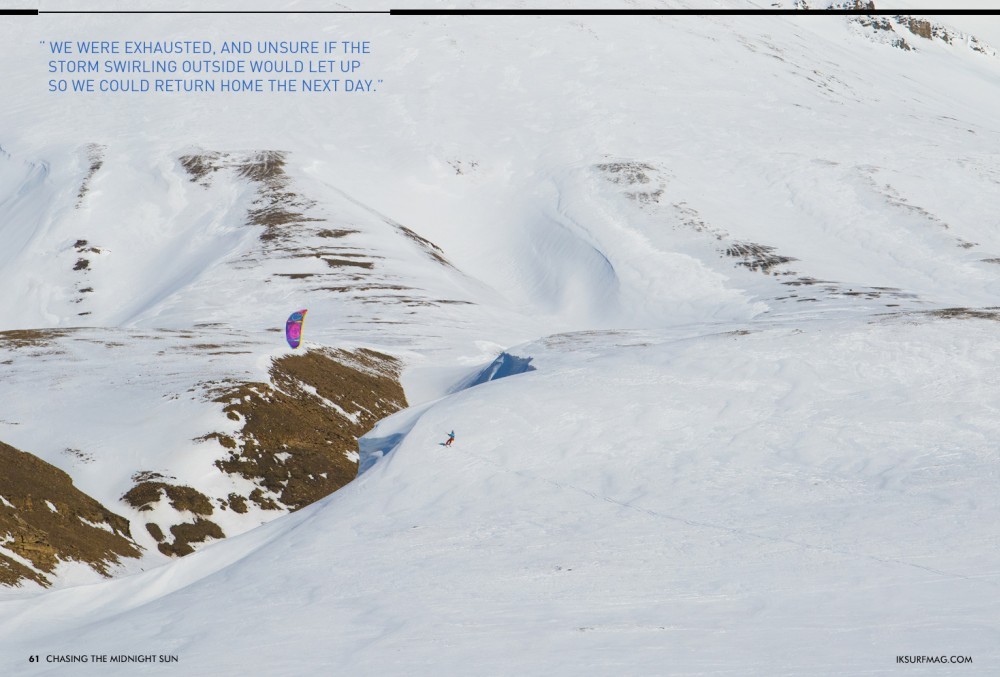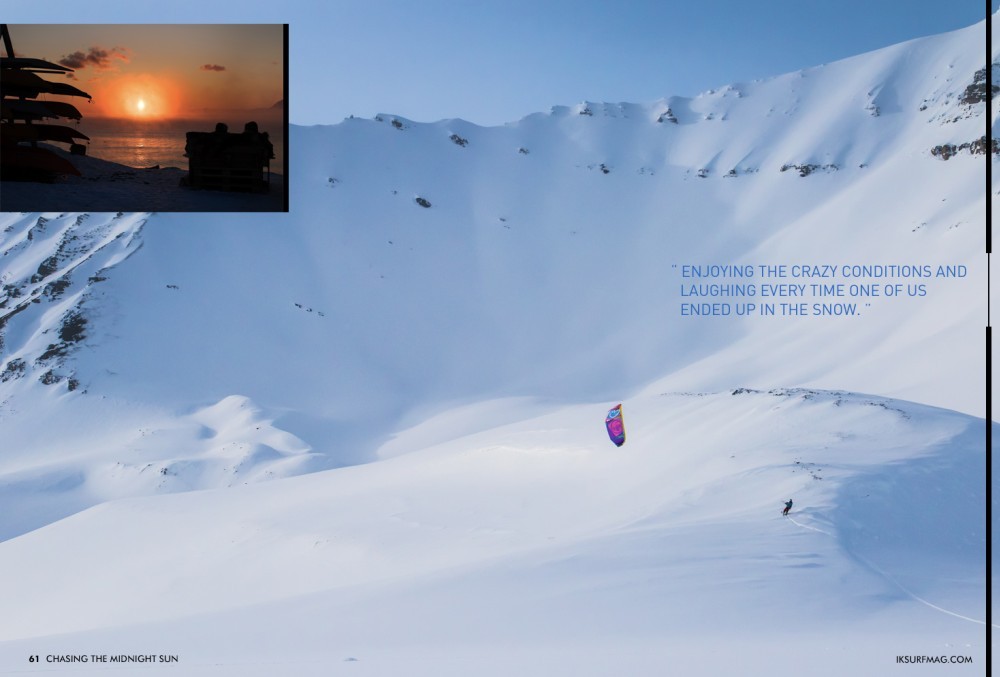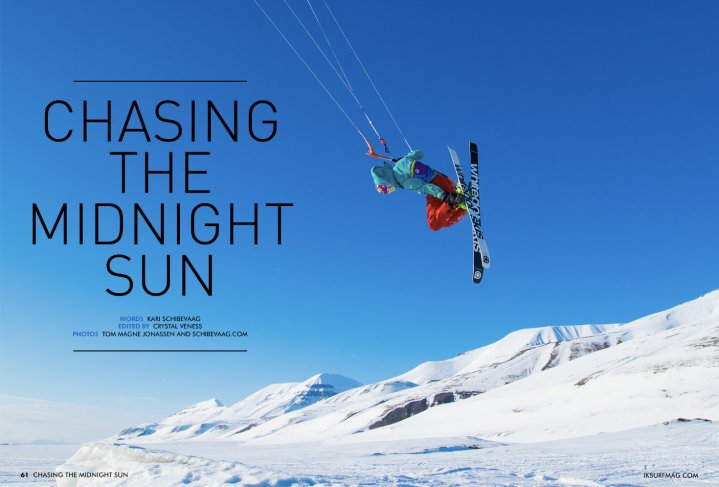
Chasing The Midnight Sun
Issue 61 / Fri 3rd Feb, 2017
Join us on a snowkiting adventure to Svalbard, Norway, where there are more polar bears than people, and you might just need to take a rifle with you during your session!
Kari Schibevaag heads off on a staycation in her native Norway to discover the snowkiting delights of Spitsbergen, Svalbard. An island famous for having more polar bears than people and where the reindeer have the run of the place.
It was winter, but raining like it was autumn. Watching the melancholy rain wash away the winter wonderland I love so much was depressing. What’s happening to the world? Typically, winter brings piercing cold temperatures that make it hard to be outside, but this season had brought unpredictable temperature changes and a constant downpour.
I broke my nose on my last trip to Cape Town. My doctor had advised me to stay away from the snow and the sun, a seemingly impossible order. I planned for a quiet winter at home but had cabin fever almost immediately. What’s a person to do when their two greatest sources of joy are prohibited? I couldn’t accept it. I tweaked my snow goggles to fit on my recovering nose while contemplating a snowkiting trip to the mountains to escape the relentless rain.
My mind had been on Spitsbergen, the distant island hiding so far up in the northern hemisphere that the sun never rises and never sets, depending on the season. The island lies in the remote Norwegian archipelago of Svalbard, and I had always dreamed of visiting.
When tourists think of Norway, they often picture cold, dark, snowy scenery with polar bears and reindeer tromping through the streets. And yes, we do have this...in Svalbard.
The polar bears are taking over this far-away land, where the human population of 2,000 is outnumbered by the isbjorn, whose numbers sit at 3,000. Situated north of mainland Europe, Svalbard lies midway between continental Norway and the North Pole. The group of islands ranges in latitude from 74° to 81° north, with the largest island of the chain being Spitsbergen.
It had been a dream destination for me, but a great distance from my home and a difficult trip to make without local knowledge. I had imagined snowkiting in Svalbard for long enough, and with a sunny forecast over the islands, it looked like I finally had a chance to make it a reality.
My phone woke me up the next morning with a message from a friend, inviting me to Svalbard. It only took a few minutes to book my flight – an easy trip direct from Oslo to Longyearbyen with a short pit stop in Tromsø. The hardest thing about visiting is finding accommodation in the high season. There are a few hotels and hostels in Longyearbyen, but supply is limited, and reservations are essential.
I touched down in Spitsbergen to shining sun and mountains frosted with powder. It felt like landing on a snow-covered moon without a tree in sight. The perfect conditions for skiing and snowkiting. Why hadn’t I come here before??
The first day was spent around town with Tom and Christian as we waited for the rest of our crew to arrive. It was the season of the midnight sun; we could be outside 24/7.
What a place! Norway never ceases to impress me. Reindeer wandered the street and Christian – our local friend – informed us that they had the run of the entire island. Citizens of Svalbard had the right to hunt one reindeer per person every year. Svalbard reindeer don’t look like typical mainland reindeer. They have short legs and absolutely no fear of people.
Svalbard is also home to thousands of polar bears, something that you won’t find in mainland Norway. They are the largest bears on the planet and vicious predators, but they look terribly cute. I was a bit nervous about walking around after hearing stories from the locals of polar bears coming into town, but it wasn’t a daily occurrence, which gave me some comfort. We were kiting in Adventsdalen (close to town) and were told that we wouldn’t run into any of the aggressive isbjorn there.
Snowkiting here was heavenly. Exploring this winter scape was unimaginably fun. Gliding up mountains, riding over the frozen water, and navigating through untouched snowbanks...it was better than the dreams I’d had. I forgot all about the polar bears and revelled in the stunning nature surrounding me.
Two days later, a hungry young polar bear came into town, right through the area I had been kiting in. The local authorities attempted to scare him away with a helicopter and snowmobile, but after several attempts had no choice but to tranquillize him and fly him to the other side of the island. I was lucky not to have encountered him out in the snow, but picked up a rifle I could carry while kiting just in case one of his friends wanted to stop by town!
The entire crew arrived over the next few days, and we excitedly prepared for an icy expedition. Luckily, Gunvor had a friend who was an experienced guide that wanted to join us on our trip to Isfjord Radio. We packed snowmobiles down with kite and ski gear and set off.
The journey began in perfectly sunny conditions with no wind; only snow covered landscape around us. The guide set the route for us to follow, hoping for wind along the way. We passed through the mostly Russian town of Barentsburg, a departure from the traditional Norwegian town we had come from, which was apparent when we visited the local hotel serving Russian beer and vodka.
Several hours later, we found wind at a glacier along our path. We set up our kite gear, and spread out to traverse the spectacular mountains, keeping an eye open for any polar bears lurking in the snow.
Weather changes fast in this part of the world, and we were surprised by a big storm. We hurried to pack down and finish the drive by snowmobile to Isfjord Radio, where we searched through the wind-blown territory for our accommodation.
Isfjord Radio is located at Kapp Linne by the Isfjord on Spitsbergen Island. It’s a coast radio station that was established in 1933 and has played a significant role in telecommunication between the Svalbard archipelago and the outside world. Now, it’s been converted to a hotel that is only accessible by boat, snowmobile, or dogsled.
We arrived to find delicious food that warmed us up, and a hot shower before bed. We were exhausted, and unsure if the storm swirling outside would let up so we could return home the next day. You never know in Svalbard. We crossed our fingers and drifted off to sleep.
The next morning brought even more snow, outside and in. The door had broken overnight, and the hallway was full of fresh powder. Apparently, this was a regular occurrence, which would be fixed when the wind died down some.
We decided to attempt the journey back to Longyearbyen after a hearty breakfast but found the conditions difficult in one-meter powder that was piling up as the day went on. Our snowmobiles were constantly tipping over, and the snow continued to fall. Not to be swayed, we carried on, enjoying the crazy conditions and laughing every time one of us ended up in the snow. The best thing about fresh powder is it doesn’t hurt!
Just before we arrived back in Longyearbyen, the sun shone back through the clouds, and we were treated to a beautiful midnight sun over town. In April, the sun stays in the sky day and night, and sleep is often hard to come by.
We spent the next few days getting to know the area around Longyearbyen, taking the snowmobiles out for short snowkite trips whenever the wind blew. We were fortunate to have beautiful, sunny, windy conditions for much of our adventure, and found snowy playgrounds in every direction to fly around.
Stepping back onto the plane was a wistful moment, but I knew it was time to head home. Flying over the frosty islands, I knew I would be back next winter to achieve an even bigger dream - crossing Svalbard by kite.
See you next winter when the Svalbard Snowkite Expedition team, “Green Wind,” packs our gear to travel across the total length of Svalbard, powered only by wind.
I can’t wait!
By Kari Schibevaag




